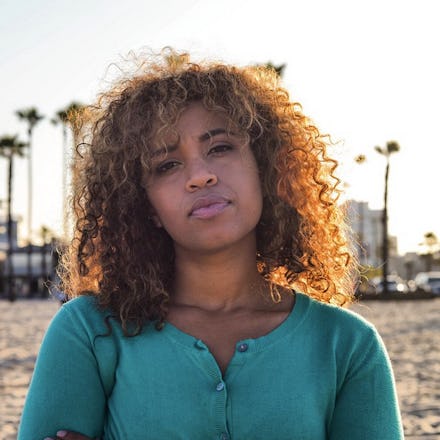9 Striking Instagram Photos Celebrate the 'Blaxicans' of Los Angeles

California is one of the more racially diverse U.S. states, in part because of its high rate of interracial unions.
Between 2008 and 2010, a Pew study found that the American West — including California and Hawaii — led the nation in marriages between people of different races, with 22% of all such unions fitting that descriptor.
In Los Angeles, this pattern is easy to visualize. Ethnic enclaves like Boyle Heights have a storied history of intermingling cultures, with Japanese-Americans long coexisting alongside Jewish families and the area's Latino majority to create the closest thing to a true American melting pot — despite the city's broader, persistent inequality and ongoing racial segregation.
In historically black South L.A., this pattern has its own contours. Walter Thompson-Hernandez, a researcher at the University of Southern California, is committed to unraveling them.
Thompson-Hernandez recently launched the Instagram account Blaxicans of L.A. to supplement his studies into one of the city's less-recognized ethnic groups: people of mixed Mexican and black ancestry.
A self-identified "blaxican" himself, Thompson-Hernandez has a highly personal stake in his research. "This really began 2 1/2 years ago when I was at Stanford," he told Mic on Monday. "I was interested in what blaxicans in South L.A. [where I'm from] meant for the changing demographics of that community.
"In Los Angeles, East Palo Alto, parts of Alabama and North Carolina, lots of immigrants are moving into these historically black neighborhoods," he added. "The question becomes, 'How are people understanding these changes there?'"
For South L.A. residents, the impact of these changes are no secret. The neighborhood has gotten a lot less black and a lot more Latino in recent years. According to the Los Angeles Times, blacks made up about half of all people living in the area in 1990. Today, two-thirds of its residents are Latino — mostly of Mexican descent. By 2012, there were about 80,000 fewer black people in South L.A. than there had been 23 years earlier.
The region's history is also peppered with intermittent tension among these communities, as systemic racism and perceived competition for resources was articulated through violence. It remains one of the poorest areas in Los Angeles and was home to two of the 20th century's most devastating American race riots.
"These were very real, lived realities for us growing up there," Thompson-Hernandez told Mic. "A lot of people who follow the [Instagram] account who were also born and raised in South L.A., and a large number of these people have been able to witness blacks and Latinos at odds.
"We have seen antiblack racism in our own family structures," he continued. "We've seen sensational stories about black versus Latino violence in the media. But my hope is that the people who are deeply invested in both of those experiences can maybe create a bridge between communities. I would hope this account and this project can create space for people to heal."
At its core, the project has an even broader aim: to shift the conversation around race in America. "Right now, especially in multiracial scholarship, we talk about mixed identity through a black-and-white lens," Thompson-Hernandez said. "A lot of people don't know this, but the Loving v. Virginia (1967) Supreme Court case" which ruled all laws prohibiting interracial marriage unconstitutional "was actually predated by a California case called Perez v. Sharp," Thompson-Hernandez said.
To briefly recap: Loving v. Virginia involved Mildred and Richard Loving, a black woman and a white man whose then-illegal marriage prompted their arrest, prosecution and sentencing to one year of prison in Virginia. They challenged the ruling and went down in history as standard-bearers for the nationwide triumph of interracial marriage.
The earlier California case, however, involved a black man named Sylvester Davis and a Mexican woman named Andrea Perez, whose legal fight to marry resulted in the first court ruling of the 20th century to rule bans on interracial marriage unconstitutional. The site of their 1948 battle was Los Angeles.
h/t Fusion